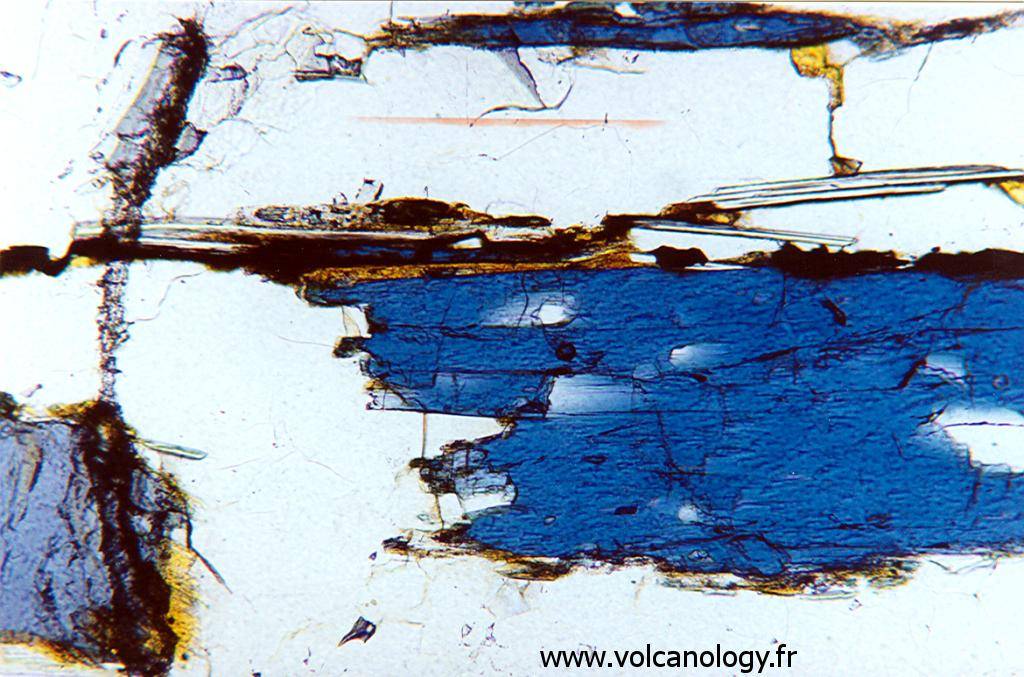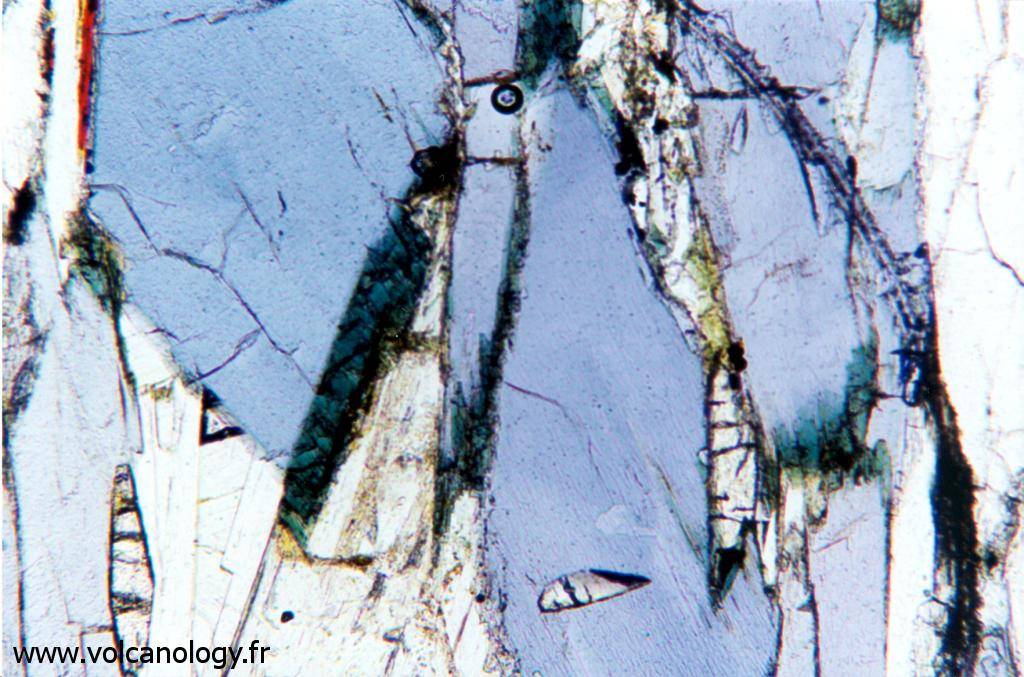Blue amphibole variety Glaucophane (seen under a polarising microscope)
Blue amphibole, the glaucophane variety, from the blue schists on the island of Groix in Brittany, is an emblematic mineral of the region. This mineral forms under conditions of high pressure and low temperature, characteristic of subduction zones where oceanic rocks are metamorphosed at depth. Glaucophane, with its bright blue to blue-grey colour, gives the Groix schists their characteristic and spectacular hue, which contrasts with the other minerals such as lawsonite and jadeite often present in the rock. These blue schists are among the best-known examples of high-pressure metamorphism in France, and are attracting the attention of geologists around the world. The glaucophane from the island of Groix is particularly prized for its rarity and for the geological story it tells, marking the traces of ancient tectonic processes associated with the subduction of the oceanic plate beneath the European continental plate millions of years ago.


Leave a Reply